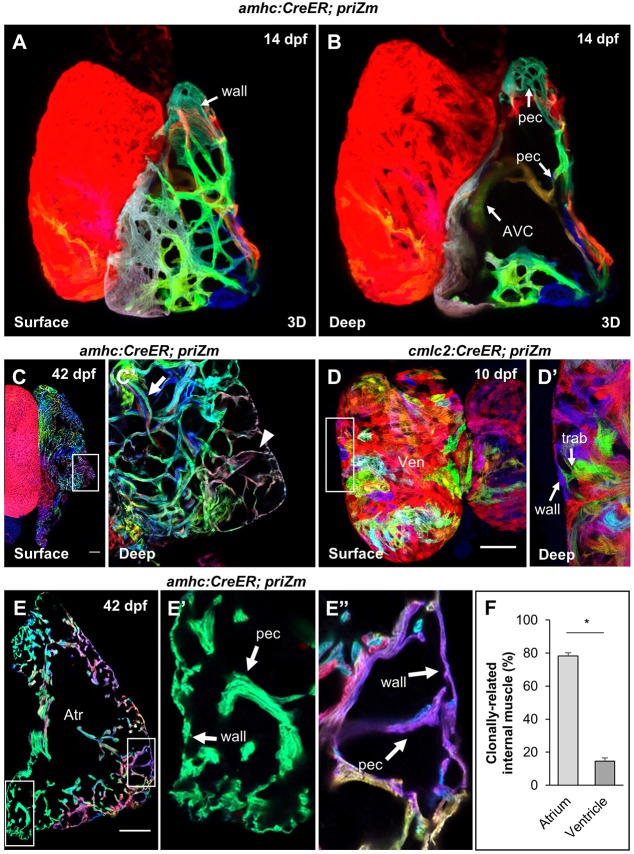Fig. 2.
Atrial pectinate branches directly from wall cardiomyocytes. (A,B) 3D reconstructions of a 14 dpf amhc:CreER; priZm heart at the surface (A) and with the anterior hemi-section obscured to show interior structures (B). The atrio-ventricular canal (AVC) and newly formed pectinate fibers (pec) are indicated. (C) Surface and (C′) deep optical sections of a 42 dpf atrium. Arrowhead indicates monoclonal pectinate fiber contacting atrial wall. Arrow indicates thicker, polyclonal pectinate fiber deeper in the lumen. (D) Surface and (D′) deep optical sections of a 10 dpf cmlc2:CreER; priZm ventricle treated with 4-HT at 3 dpf. Arrows indicate a point of contact between a trabecular (trab) and ventricular wall cardiomyocyte (wall). Note that red cardiomyocytes, as the unrecombined color, are uninformative for clonal concordance assessment. (E) Cryosection of a 42 dpf amhc:CreER; priZm atrium exhibiting monoclonal, clonally concordant pectinate (pec) muscle (E′) and a polyclonal fiber containing clonally concordant muscle (E″); Atr, atrium. (F) Frequency with which pectinate and trabecular muscle share a clonal origin with adjacent cardiomyocytes of the atrial and ventricular wall, respectively [means±s.e.m.; n=5 (atria) and 11 (ventricles) from 16 hearts]. Asterisk indicates significantly different means (two-tailed Student's t-test, P<0.001). Scale bars: 100 µm in C,C′,E-E″ and 50 µm in D,D′.

